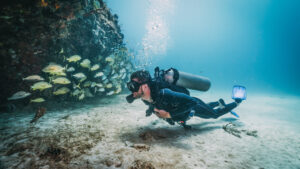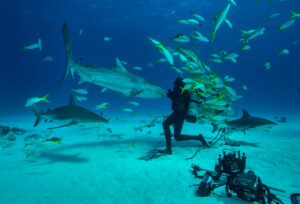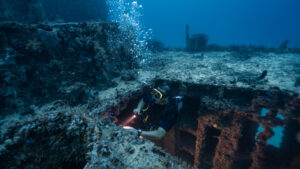What is a Yoke Valve?
A yoke valve or fitting is a critical component in scuba diving, serving as the connection between a regulator or filling whip and a diving cylinder. As a vital part of the diving equipment setup, the yoke valve ensures the proper and secure attachment of the regulator to the cylinder, enabling divers to breathe underwater. This article delves into the history, design, and specifications of yoke valves and fittings, as well as their importance in the realm of scuba diving.
History and Development
The modern yoke valve traces its roots back to the early days of scuba diving when Jacques-Yves Cousteau and Emile Gagnan invented the Aqua-Lung, the first open-circuit scuba system, in 1943. As the sport of scuba diving evolved, so did the equipment, with the yoke valve system emerging as the industry standard for connecting regulators to cylinders. The yoke valve system was designed to replace the older, less secure clamping system, improving the safety and ease of use for divers.
Design and Specifications
A yoke valve consists of two primary components: the valve itself, which is attached to the diving cylinder, and the yoke fitting, which connects the regulator or filling whip to the valve. The valve is equipped with a threaded outlet port, which mates with the regulator’s first stage, and an O-ring, which forms a watertight seal. The yoke fitting is essentially a metal clamp with a tightening screw, which compresses the regulator against the valve and ensures a secure connection.
Yoke valves and fittings are designed to accommodate various cylinder pressures, typically ranging from 200 bar (2900 psi) to 300 bar (4350 psi). The international connection (also known as the A-clamp or INT connection) is the most widely used system for yoke valves, with the DIN (Deutsches Institut für Normung) connection being another alternative.
International Connection (A-Clamp or INT)
The international connection, or A-clamp, is the most commonly used system for connecting regulators to diving cylinders. This connection is characterized by a yoke fitting that clamps around the valve, which is equipped with an O-ring on its outlet port to create a watertight seal. The yoke fitting is secured to the valve by tightening a screw, which compresses the regulator against the O-ring.
The international connection is designed to accommodate cylinder pressures of up to 200 bar (2900 psi), making it suitable for the majority of recreational diving applications. This connection is widely used in many countries, particularly in the United States, Canada, and Australia.
DIN Connection
The DIN (Deutsches Institut für Normung) connection is an alternative to the international connection, and it is often used by technical divers who require higher cylinder pressures. DIN connections are characterized by a threaded regulator first stage that screws directly into the diving cylinder’s valve, eliminating the need for a yoke fitting. This design allows for a more secure connection and can accommodate cylinder pressures of up to 300 bar (4350 psi).
DIN connections are widely used in Europe and other parts of the world, and many diving facilities offer both DIN and international connection options to cater to divers’ needs.
Yoke Valve Maintenance and Safety
Proper maintenance and care of yoke valves and fittings are essential to ensure a safe and enjoyable diving experience. Regular inspection of the O-rings for wear and tear, lubrication with silicone grease, and proper tightening of the yoke screw are all crucial steps in maintaining a watertight seal and secure connection. Additionally, it is important to keep the valve and yoke fitting clean and free from debris and contaminants, as these can compromise the integrity of the connection.
Yoke valves should also be serviced periodically by a qualified technician, who can inspect the valve for wear, corrosion, or damage, and replace any necessary components. This is typically recommended every one to two years, or after 200-300 dives, depending on the manufacturer’s guidelines and the intensity of use.
Safety measures should always be taken when handling yoke valves and fittings. It is essential to ensure that the regulator and cylinder are properly connected before entering the water. Divers should familiarize themselves with the proper assembly and disassembly procedures, as well as the specific connections for their equipment. Moreover, it is crucial to adhere to the maximum operating pressures for the yoke valve system and the diving cylinder to avoid over-pressurization, which can lead to equipment failure and potential injury.
Yoke Valve Compatibility and Adaptability
While the international connection is the most common yoke valve system, it is essential to consider compatibility when using different equipment or diving in different locations. Many dive centers and resorts around the world provide cylinders with yoke valves compatible with the international connection. However, divers traveling to regions where DIN connections are more prevalent may need to use an adapter to convert their regulator from an international connection to a DIN connection, or vice versa.
Many dive equipment manufacturers now offer regulators with interchangeable yoke and DIN fittings, allowing divers to switch between connection types with ease. This adaptability is particularly valuable for divers who travel frequently or engage in both recreational and technical diving.
The yoke valve and fitting are integral components of the scuba diving experience, enabling divers to connect their regulators securely to diving cylinders. With the international connection being the most widespread system for yoke valves, it is crucial for divers to understand the specifics of their equipment and the compatibility of different connections. By adhering to proper maintenance and safety guidelines, divers can ensure that their yoke valve systems function optimally, providing a safe and enjoyable diving experience.

















